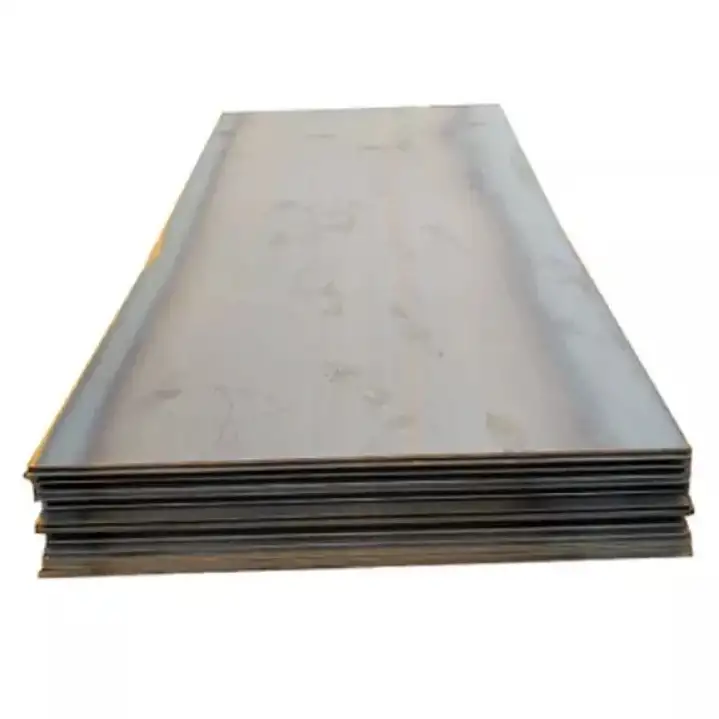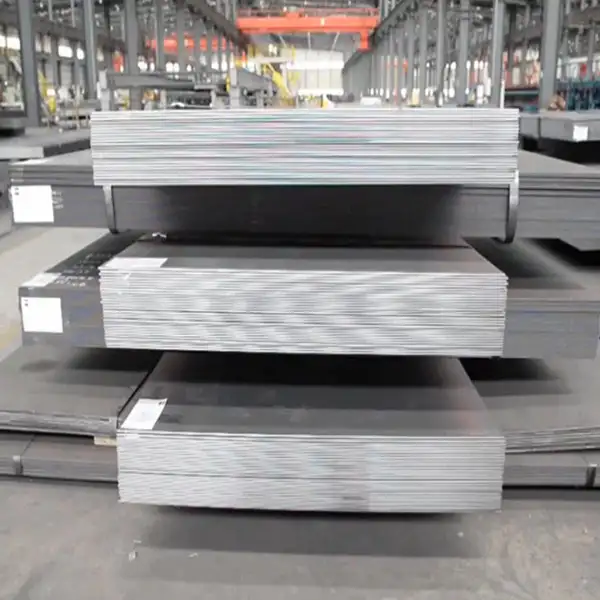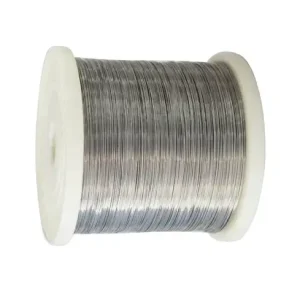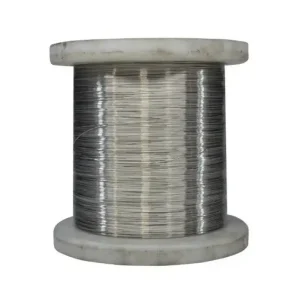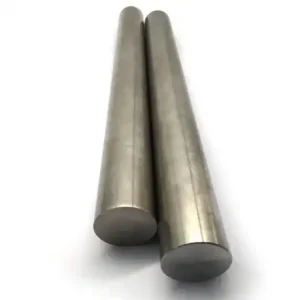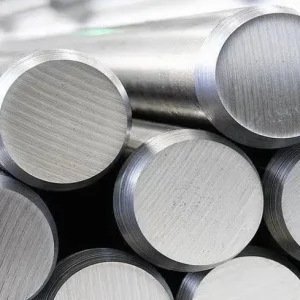1020 cold-rolled steel plate is a low-carbon, highly workable mild steel grade that combines good formability, solid weldability, and reliable dimensional stability for general fabrication and light structural parts. It is an economical choice when moderate strength and excellent machinability are required. For buyers needing large volumes from a China manufacturer, MWAlloys offers 1020 cold-rolled plate at factory direct pricing, immediate stock availability for common sizes, and fast dispatch from our Chinese mill network — typically priced below Western distribution channels while meeting ASTM A1008 and common international equivalents.
What is 1020 cold-rolled steel?
1020 refers to a plain-carbon steel with nominal carbon near 0.20% by weight. When supplied in cold-rolled plate or sheet condition, the material has been rolled at room temperature after pickling or annealing to provide superior surface finish, tighter thickness tolerances, and increased strength via work hardening compared with hot-rolled material. Typical uses include turned shafts, stamped components, light structural parts, and welded fabrications that require good dimensional control and easy machining. Authoritative material summaries and datasheets list the 1020 family among common low-carbon steels used for forming and general manufacturing.
Chemical composition
Below is a concise composition table giving the usual ranges for AISI/SAE 1020. Actual mill test reports (MTRs) should be consulted for certified orders.
| Element | Typical range (wt%) |
|---|---|
| Carbon (C) | 0.17 – 0.23 |
| Manganese (Mn) | 0.30 – 0.60 |
| Phosphorus (P) | ≤ 0.040 |
| Sulfur (S) | ≤ 0.050 |
| Iron (Fe) | Balance |
Notes
-
The carbon figure defines the “mild steel” behaviour: good ductility and limited hardenability.
-
Manganese improves strength and toughness; the listed Mn range is normal for commercial 1020.
Mechanical and physical properties
Shown below are typical mechanical properties for cold-rolled 1020 plate in common mill conditions. Values vary by mill practice and thickness; always request MTRs for contract acceptance.
| Property | Typical value (metric) | Typical value (imperial) |
|---|---|---|
| Density | 7.87 g/cm³ | 0.284 lb/in³ |
| Tensile strength (UTS) | 350 – 520 MPa (typical range) | 51 – 75 ksi |
| Yield strength (0.2% offset) | ~210 – 370 MPa (process dependent) | ~30 – 54 ksi |
| Elongation (A%) | 15 – 25% | — |
| Hardness (HB) | ~111 – 165 HB (cold-worked varies) | — |
| Modulus of elasticity | 210 GPa | 30,000 ksi |
Testing and variation
Cold rolling increases yield and tensile values relative to an annealed condition. Thinner gauges that have been heavily cold-worked will show higher hardness and slightly reduced elongation.
1020 cold-rolled steel plate specifications (typical)
This table shows typical commercial plate/sheet sizes and finish classes often stocked by mills and distributors.
| Parameter | Typical values |
|---|---|
| Thickness | 0.5 mm — 6.0 mm (common stock), plates above 6 mm usually hot-rolled then cold-finished |
| Width | 600 mm — 2100 mm (standard coil widths available too) |
| Length | Cut lengths to order; coils are common for wholesale |
| Surface finish | Cold-rolled, 2-roll / skin-pass; oiled mill finish; 2B finish for certain drawing grades |
| Tolerances | Per ASTM A1008 or mill tolerance sheets (thickness tolerance ±0.01–0.1 mm depending on gauge) |
| Certification | MTR per EN 10204 / ASTM A1008 where requested |
Reference standard
Cold-rolled sheet and plate used for general forming is commonly ordered to ASTM A1008, which defines product types and tolerances for cold-rolled material.
Metal forming and production process
A typical production flow for 1020 cold-rolled plate or sheet:
-
Steelmaking and casting — liquid steel is refined and cast into slabs.
-
Hot rolling — slab reduced to hot-rolled coil.
-
Pickling — acid pickling removes scale from the hot-rolled coil.
-
Cold rolling — coil is reduced at room temperature to target thickness; skin-pass may be used to control yield strength and surface finish.
-
Annealing / tempering — optional batch or continuous annealing to restore ductility and relieve stresses.
-
Final surface treatment — oiling, slitting, cutting to length, and finishing to 2B or other specified surface.
-
Inspection and testing — dimensional checks, mechanical tests, and MTR issuance.
Cold reduction increases strength through strain hardening while producing a smooth surface and tight thickness control that many fabrication processes prefer.
Equivalent grades (cross-reference)
Common international equivalents for SAE/AISI 1020:
| System | Grade |
|---|---|
| SAE / AISI | 1020 |
| UNS | G10200 |
| DIN / EN | 1.0402 (C22) |
| JIS | S20C |
| British (BS) | EN3B (BS 970 070M20) |
When substituting, check chemistry and mechanical properties rather than just the grade name. Certification language and tolerances may differ between standards.
Typical applications and design considerations
Common uses
-
Turned components such as shafts, pins and studs.
-
Deep-drawn or stamped parts where a smooth surface and good formability matter.
-
Welded assemblies in light-duty structural, furniture frames, and appliance components.
-
Prototype components and low-cost fixtures.
Design tips
-
Use fillets and generous radii to avoid excessive thinning during forming.
-
For stamped parts requiring deep drawing, pick a lower yield grade (annealed condition) or specify drawing steel types under ASTM A1008.
-
If case hardening is required, 1020 can be carburized for a hard surface layer on a ductile core, but its low carbon limits the depth of hardening unless pre-carburized.
Sizes, weight calculations and common stock
Weight formula (metric)
Weight (kg) = Width (m) × Length (m) × Thickness (m) × Density (7,850 kg/m³ approximate for steel)
Sample common sizes and approximate weights (metric)
| Thickness (mm) | Width (mm) | Length (mm) | Area (m²) | Weight (kg) |
|---|---|---|---|---|
| 1.0 | 1000 | 2000 | 2.00 | 15.7 |
| 2.0 | 1250 | 2500 | 3.125 | 24.5 |
| 3.0 | 1500 | 3000 | 4.50 | 35.3 |
(Use density 7.85 g/cm³; adapt for inch/imperial units using 0.284 lb/in³.)
Stocking practice
Mills and traders stock common gauges (0.5–3 mm) in 1000–2000 mm widths; specialty widths require minimum orders. MWAlloys holds regular inventory in standard gauges and offers cut-to-size services from our Chinese mills.
Welding, heat treatment and finishing
Welding
-
1020 welds readily with common processes (MIG/GMAW, TIG/GTAW, SMAW) using suitable filler metals (ER70S-x family).
-
Preheating is rarely necessary for thin gauges, but for thicker sections, moderate preheat reduces risk of hydrogen cracking.
-
Lower carbon means good fusion without excessive cracking tendency.
Heat treatment
-
Full hardening is not practical because of low carbon content.
-
Case hardening/carburizing is feasible for surface wear resistance while retaining a ductile core.
-
Annealing restores ductility after heavy cold-work; normalization is less common for this grade.
Surface protection
-
Cold-rolled sheet should be oiled for storage. For corrosion resistance, consider galvanizing, painting, or coil coating depending on end use.
Quality control, testing and authoritative standards
Key standards and tests buyers should reference:
-
ASTM A1008/A1008M — Standard for cold-rolled sheet and coil (product types and tolerances).
-
SAE/AISI grade definitions — chemical and mechanical ranges for 1020 (UNS G10200).
-
Mill Test Reports per EN 10204 — 2.1 / 2.2 / 3.1 certification levels depending on buyer requirements.
-
Surface and dimensional inspection per purchaser drawings; hardness and mechanical testing per agreed test plans.
1020 steel plate price comparison 2025
Important note: steel prices move daily influenced by scrap, iron ore, energy, tariffs, and local supply. The figures below are representative Q2–Q3 2025 ranges taken from market reports and industry indices. Use these ranges only for initial budgeting; request formal quotes.
| Region | Typical 2025 range for cold-rolled coil/plate (USD per metric tonne) | Source / context |
|---|---|---|
| China (domestic CRC) | ~$500 – $620 / MT (spot varied by month; June Q2 reported ~516 USD/MT) | IMARC reporting for Q2 2025 and national indices. |
| USA (CRC spot / benchmark) | ~$1,050 – $1,300 / MT (higher due to duties and domestic demand) | Industrial market bulletins and US indices May–June 2025. |
| Europe (CRC delivered) | ~$800 – $1,050 / MT (varies by country, energy costs influence mill pricing) | Regional indices and market commentary for Q2 2025. |
How to interpret
-
China export offers will often undercut these domestic figures when FX and freight make competitive quotes; however, anti-dumping duties and logistics matter.
-
U.S. prices remained elevated in 2025 partly due to tariff measures and supply chain constraints.
MWAlloys procurement advantage
-
MWAlloys furnishes factory-direct CIF/FOB quotes from mills in China; this commonly yields landed costs significantly below local distributor prices in Western markets when tariffs and freight are optimized. For accurate landed cost, MWAlloys will provide a full breakdown including mill price, packing, inspection, freight, insurance, and local duties where applicable.
How MWAlloys supplies 1020 cold-rolled plate
What we offer
-
Genuine mill certifications (MTR) per buyer request.
-
100% factory direct pricing from our partner mills in China.
-
Stock for common gauges: 0.5–3.0 mm in standard widths.
-
Cut-to-length and slitting services to customer tolerances.
-
Fast order processing for stocked items with priority loading.
Typical commercial terms
-
Minimum order quantities vary by gauge and cut options; sample orders are available for prototyping.
-
Standard lead times for stocked items: immediate shipment (subject to port and logistics status). Non-stocked production lead time: depends on mill schedule; MWAlloys will confirm at RFQ stage.
Quality assurance
-
Pre-shipment inspection (third-party inspection available) and MTR issuance per EN 10204.
-
Packaging to export standards with anti-rust oil and wooden skids for plate shipments.
Procurement checklist
-
Confirm exact chemical and mechanical ranges; require MTRs.
-
Specify surface finish and any drawing/annealing requirements.
-
Clarify tolerance and flatness expectations; reference ASTM A1008 or equivalent.
-
Request sample or small test order before large volume commitments.
-
Check customs tariffs and import licenses for origin.
-
Consider third-party inspection and lab test on arrival for volume buys.
-
Negotiate INCOTERMS and include transit insurance when needed.
-
Ask seller (MWAlloys) for lead times, packaging photos and shipping schedule.
Frequently asked questions (FAQs)
-
Is 1020 the same whether cold-rolled or hot-rolled?
The base chemistry is the same; cold-rolled has tighter thickness tolerance and better surface finish with slightly higher yield/tensile due to work hardening. -
Can 1020 be heat treated to high hardness?
Not effectively: the low carbon limits through-hardening. Case hardening (carburizing) is the common route to a hard surface. -
What standards should I reference when specifying 1020 cold-rolled sheet?
ASTM A1008 for product type and general tolerances, and require MTRs per EN 10204. -
Which international grade corresponds to 1020?
Common equivalents: DIN/EN 1.0402 (C22), JIS S20C, UNS G10200. -
How does thickness affect forming?
Thinner gauges are more formable; thicker gauges need annealing for deep drawing. -
Is 1020 suitable for welding?
Yes; it welds easily with standard consumables, but use good joint design for thicker sections. -
What surface finishes are offered for 1020 cold-rolled?
Typical mill finishes: cold-rolled oiled, 2B for further processing, skin-pass for yield control. -
How do I calculate plate weight?
Use: Width × Length × Thickness × Density (7,850 kg/m³). Example provided earlier. -
Are 2025 prices for CRC stable?
Prices were volatile; Q2 2025 showed regional divergence (China lower, USA higher). Always request live quotes. -
Can MWAlloys provide small sample orders?
Yes; contact MWAlloys sales for pro forma, sample availability, and shipping options.
Practical buyer notes and final thoughts
1020 cold-rolled plate delivers a pragmatic balance between cost, formability and machinability. For mass production of relatively simple components, it often gives the best total cost of ownership. When specifying, be precise about surface finish, tolerances and certification level. MWAlloys supports buyers by delivering mill-direct pricing, timely MTRs, and logistics coordination for shipments from China. If you want a tailored quote for a given gauge, width and quantity, provide required sizes, finish, and destination port and MWAlloys will supply a complete landed cost comparison.

